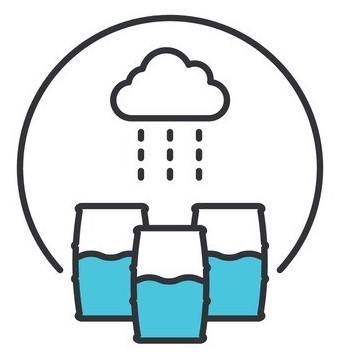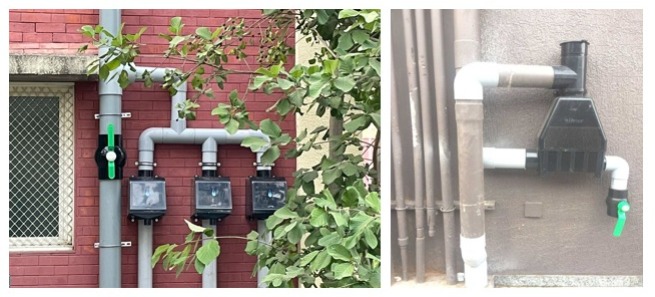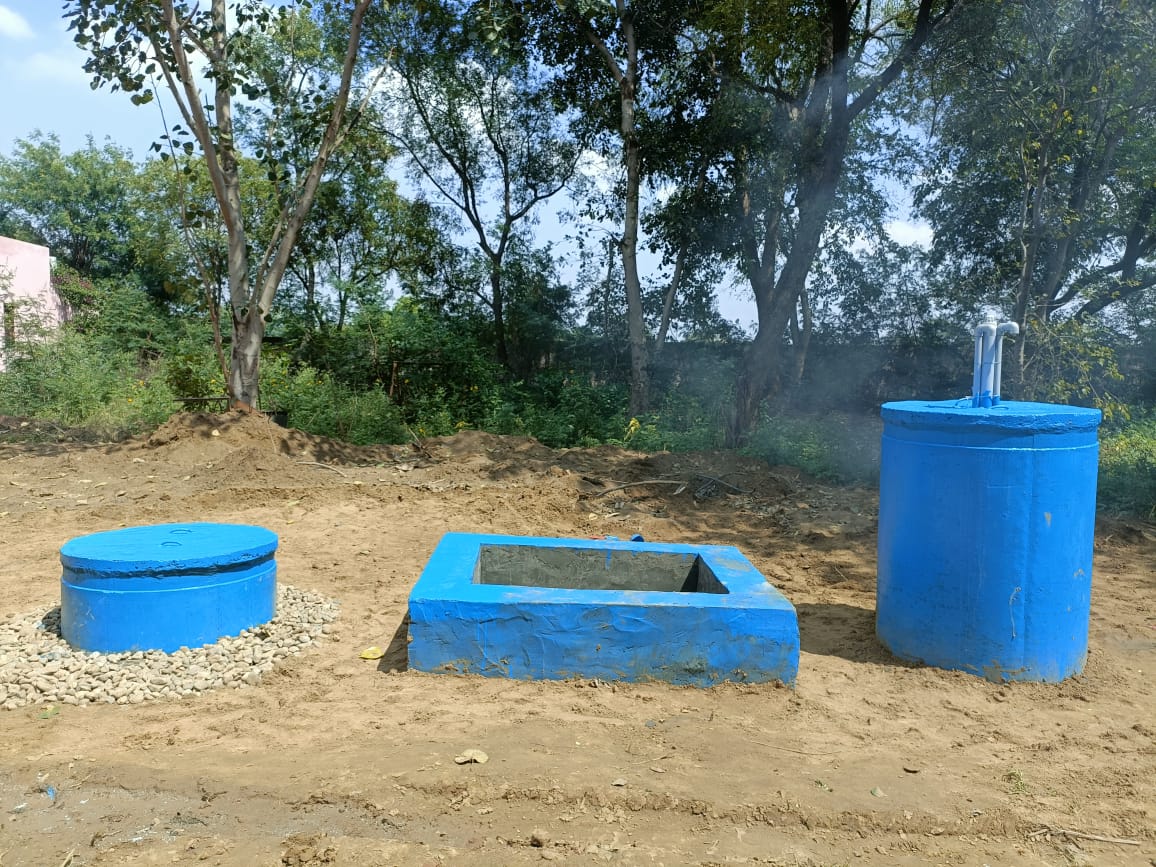Water scarcity is a growing concern worldwide, driven by increasing populations, climate change, and urbanization. With the unpredictability of weather patterns and the growing stress on freshwater supplies, rainwater harvesting offers a sustainable solution to meet water demands. In this blog, we will dive deeper into two primary methods of rainwater harvesting: rooftop rainwater harvesting (RRWH) and surface rainwater harvesting (SRWH). We’ll explore how they work in detail, their benefits and challenges, and showcase real-life examples from around the world.

Photo credit: Shutterstock
What is Rainwater Harvesting?
Rainwater harvesting refers to the collection and storage of rainwater for future use. This can be done through various systems that capture, filter, and store rainwater for purposes like irrigation, drinking water (after treatment), industrial use, or even disaster relief. This method has proven to be a reliable and eco-friendly solution to water shortages in both urban and rural areas.
- Rooftop Rainwater Harvesting (RRWH)
How It Works
Rooftop rainwater harvesting captures rainwater from the roof of a building. It is one of the most efficient methods in urban and rural settings where space is limited. Here is the step-by-step process:
- Catchment Area: The roof acts as the catchment surface where rainwater is collected.
- Conduits: Gutters and downpipes are used to channel the rainwater from the roof to a storage tank or existing bore well. The size and design of rooftop filter is as per the size of the roof.
- Filtration: Pre-filtration systems, such as mesh filters or first flush systems, are employed to remove debris, leaves, and other impurities before the water enters the storage tank. After the first rain, all rainwater can be stored or recharged through the rooftop filter.
- Storage: Once filtered, the water is stored in tanks made of various materials (plastic, fiberglass, or concrete) for future use or may recharge in existing bore well for ground water level raising. The size of the tank depends on the catchment area and the average rainfall in the region.
- Distribution: After storage, the water can be used for irrigation, household needs, or even potable water after boiling.

Real-Life Examples of Rooftop Rainwater Harvesting
- India – Chennai
Chennai, a coastal city in India, has long struggled with water shortages, especially during dry seasons. As part of the city’s response to this challenge, the Tamil Nadu government has mandated rooftop rainwater harvesting systems for all new buildings. In the mid-2000s, the government implemented this policy, which has proven successful in reducing the dependency on groundwater and municipal water supply. Residential buildings and institutions in Chennai use the harvested rainwater for non-potable uses like washing and irrigation. Some systems have been adapted for potable water after appropriate filtration and purification.
- Singapore – Residential Projects
Singapore, known for its innovative urban solutions, has also embraced rooftop rainwater harvesting as part of its “Sustainability Blueprint.” Many high-rise buildings in Singapore incorporate rooftop systems to collect and store rainwater for non-potable uses such as irrigation and cooling. For example, The Pinnacle@Duxton, a residential complex, uses rainwater harvested from its rooftops to irrigate communal gardens. This helps reduce the urban heat island effect and the building’s water consumption from municipal sources.
Benefits of Rooftop Rainwater Harvesting
Local Water Supply: It offers a local and decentralized water supply that can be tapped during dry periods or droughts.
Cost Savings: Reduced dependency on municipal water supplies can result in significant cost savings, especially for larger buildings or commercial establishments.
Sustainability: RRWH systems are low-maintenance and have minimal environmental impact once set up and its starting cost is ₹ 2,950/-. They help preserve groundwater resources.
Challenges
Initial Cost: The initial installation cost, including the tank, filtration systems, and pipes is affordable or may vary based on site requirements.
Space Constraints: In dense urban areas, space for large storage tanks might be limited.
Maintenance: Monthly cleaning of gutters, tanks, and filters is enough to ensure water quality.
- Surface Rainwater Harvesting (SRWH)
How It Works
Surface rainwater harvesting captures runoff from larger surfaces, such as roads, parking lots, or agricultural land. In this method, the runoff water is collected through channels or drains and stored in reservoirs, ponds, or underground tanks. Here’s the process in detail:
- Catchment Area (Runoff): Rainwater runs off from impervious surfaces such as roads, pavements, and agricultural land.
- Conduits (drains and storm channels): The water is diverted through specially designed drains or channels to collect and transport it to storage areas.
- Filtration: Rainwater from surface runoff is channelized, by storm channels, shall be captured in one silt trap and one main well having five filter Medias including two non-clogging v wire SS 304 screen to filter physical impurities and divert to the recharge bore well.

Real-Life Examples of Surface Rainwater Harvesting
- China – Beijing Olympic Village
Beijing’s Olympic Village, built for the 2008 Summer Olympics, incorporated surface rainwater harvesting as part of its sustainable design. The complex features an extensive network of rainwater collection systems built into the surrounding surfaces, including roads and parking lots. The collected rainwater is used for landscape irrigation, reducing the need for municipal water supply. This large-scale SRWH system not only supports water conservation but also helps manage urban runoff and reduce flooding.
- Kenya – Rural Agricultural Use
In rural Kenya, particularly in semi-arid areas, surface rainwater harvesting is used on a larger scale for agricultural irrigation. Farmers collect rainwater runoff from surrounding hills and store it in large ponds or reservoirs. This harvested water supports crop production during dry spells and has significantly improved food security in these communities. For example, in the Turkana region, communities have implemented systems to capture surface runoff, using it for livestock watering and farming in dry seasons.
Benefits of Surface Rainwater Harvesting
- Gives fresh water free lifetime
- Maintains Ecological balance
- Raises Ground water level
- Augments the freshwater storage
- Arrests Saline water intrusion in Fresh water
- Improves ground water quality phenomenally
- Gives Food security through sustainable irrigation.
- Minimizes water pollutions
- Reduces health risks and hazards
- Averts disasters
- Brings down Water Footprint
- Zero hardness; avoids treatment and wastage
- Helps grow green cover
- Balances entire Eco System and life cycle
- Reduces Soil Erosion
- Recharged rainwater increases productivity of aquifer
- Rejuvenates other sources of water
- Dilutes impurities from ground water
- Free rural households from physical work to collect water daily
Challenges
Water Quality: Surface runoff often contains pollutants such as oils, trash, and heavy metals. After filtration water will be used to recharge the ground water only.
Infrastructure Cost: Building the infrastructure for SRWH, such as channels, drains, and large storage tanks, it can be costly, but it can also be budget-friendly and requires significant land area.
Environmental Factors: In urban areas, the impervious surfaces may increase runoff velocity, potentially causing erosion and making filtration more challenging.
Embracing Water Sustainability through Harvesting Systems
Rainwater harvesting, both through rooftop systems and surface runoff collection, is an essential tool for managing water resources in an increasingly unpredictable climate. Whether you’re looking to save water at home or use harvested rainwater for agricultural needs, these systems offer practical, sustainable, and cost-effective solutions.
Real-world examples like Chennai, Singapore, Beijing, and Kenya show the profound impact that well-implemented rainwater harvesting systems can have on urban resilience, agricultural productivity, and water conservation.
Take Action Today!
As we continue to face water scarcity, it’s essential that we adopt rainwater harvesting practices, no matter how small or large the system may be. It’s time to start harvesting the rain that falls freely from the sky and secure a more sustainable future for all.
Vardhman Envirotech
India’s Passionate rainwater company
We would like to spread this for the benefit of fellow Indians.
